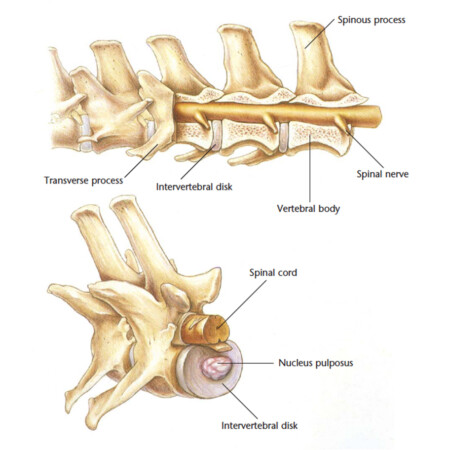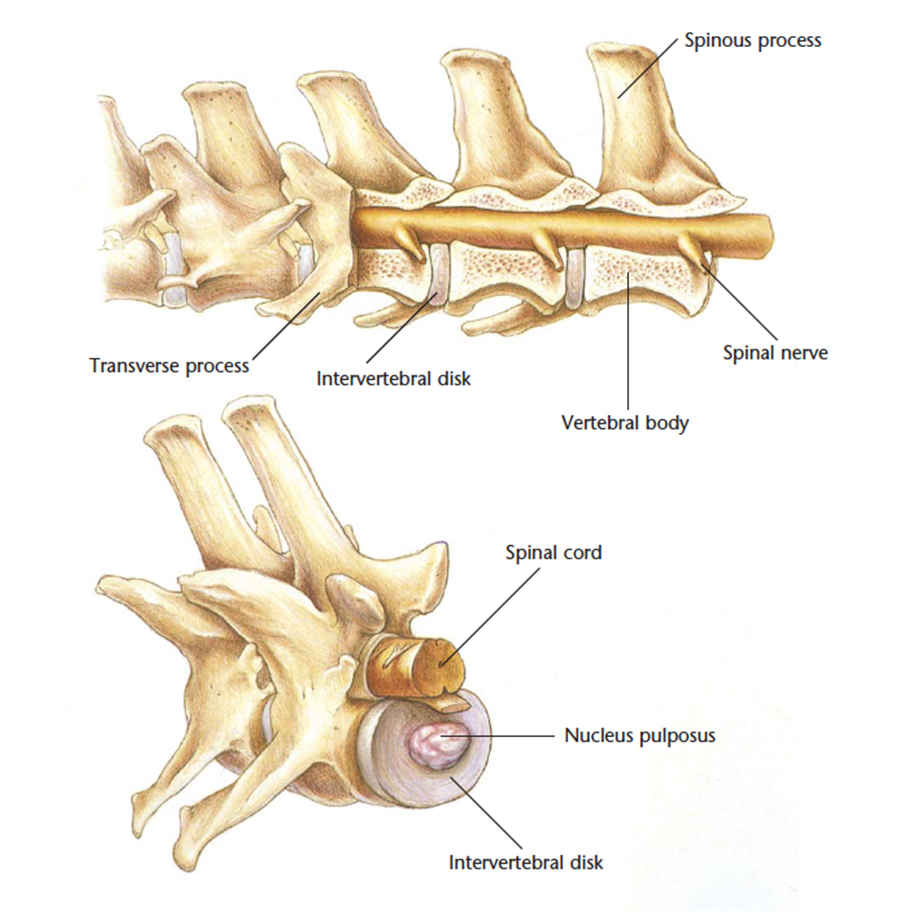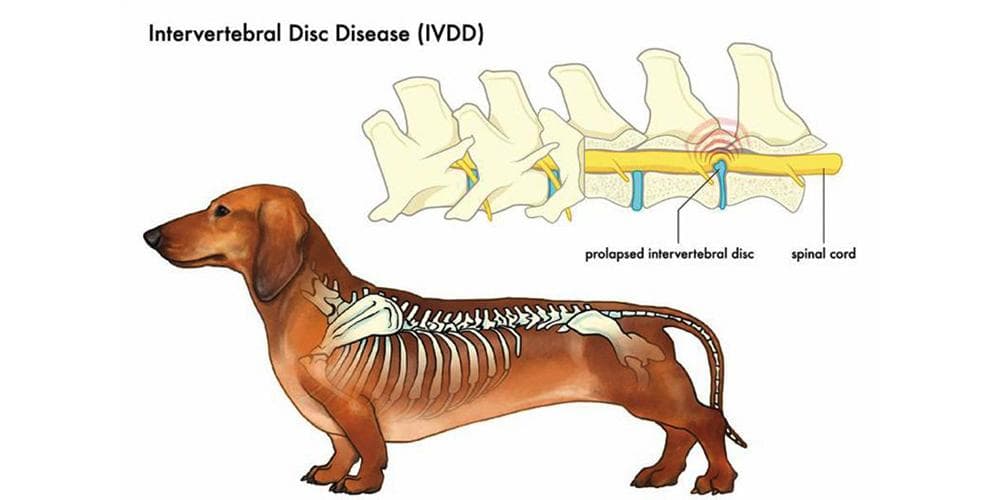Spinal Surgery

Intervertebral disc disease (IVDD)
The intervertebral disc, which gives your dog’s spine flexibility and cushions the load during movements like running or jumping, is a gelatinous inner substance surrounded by a ring of fibrous tissue. An intervertebral disc is a shock absorber that sits between each vertebra.

Intervertebral Disc Disease (IVDD) is a common spinal condition that occurs in the neck, middle back, or lower back. When the intervertebral disks deteriorate, they can no longer function as a good shock absorber and the pet can experience pain. IVDD can occur at any time and may be related to a gradual degenerative condition related to aging. The process affects the spinal cord of the dog over a period of time, often undetected. Jumping on and off furniture or other high-impact activities can also cause IVDD.
IVDD can also be described as a ruptured, slipped, bulging, or herniated disk.
IVDD occurs when the shock-absorbing discs between your dog’s vertebrae gradually begin to harden until they are unable to cushion the vertebrae properly. The hardened discs will typically progress to bulging and compressing the spinal cord, often interfering with or damaging the dog’s nerve impulses such as those that control bladder and bowel control. In other cases, a simple movement like a jump or poor landing can cause one or more of the hardened discs to burst and press into the nerves of the dog’s spinal cord causing pain, possible nerve damage, or even paralysis. The longer the compression on the spinal cord, the most severe the signs.
The condition occurs in any dog breed. But more commonly in the:
American Cocker Spaniel
Basset Hound
Dachshund
French bulldogs
German Shepherd
Labrador Retriever
Pekingese
Shih Tzu

SIGNS
Common symptoms of IVDD include, but are not limited to:
Progressive weakness and difficulty getting up or jumping.
Unwillingness or inability to walk.
Pain in the neck or back region.
Difficulty urinating and/or defecating.
Shaking or trembling (usually in response to pain)
Loss of limb function e.g. knuckling on paws.
Paralysis
DIAGNOSIS
Physical and neurological examination
Radiographs
CT scan
MRI
Myelogram
Radiology is usually the first diagnostic test. However, it can only confirm IVDD cases in 60% of cases. Therefore, CT or MRI may be recommended to help confirm the diagnosis.
CAN A DOG RECOVER FROM IVDD WITHOUT SURGERY?
If your dog has been diagnosed with IVDD and is still able to walk, non-surgical treatments may be able to help your dog recover. However, if your dog has a severe case of IVDD and has lost their ability to walk, urgent veterinary treatment is required.
Non-surgical treatment for IVDD is also called conservative treatment or management, and the goals of these treatment options are to help relieve pain and discomfort, to get your dog standing and walking again, and to help restore lost bladder and bowel control. Non-Surgical treatments for IVDD in dogs include:
Strict rest
Anti-inflammatory medications
Dietary Care
Physical Rehabilitation
SURGICAL TREATMENT OF IVDD
Surgery is considered the best, and in some cases the only, treatment option for severe cases of IVDD in dogs. A combination of spinal surgeries may be required.
Which surgeries are used to treat your dog’s IVDD will largely depend on the location of the diseased disc. There are a number of different IVDD surgeries, including fenestration, hemilaminectomy, laminectomy, and ventral slot. In some cases, a vertebral stabilization (fusion) procedure may also be recommended, especially for large breed dogs.
IVDD SURGERY SUCCESS RATES
Surgery is usually very successful, and outcomes are most positive in dogs that have not completely lost their ability to walk. In the majority of dogs with acute disc herniations, the success rate of approximately 90 percent is seen in dogs who still feel their toes. In most cases where the clinical signs have been going on for a long period of time (i.e. weeks to months), dogs do not make a 100 percent recovery, due to chronic spinal cord compression and atrophy (shrinking) of the spinal cord.
WHAT DOES SURGERY INVOLVE?
The aim of IVDD surgery is to remove the diseased intervertebral disc in order to relieve the pressure on your dog’s spinal cord, restore normal blood flow, and prevent disc problems in the future.
If back surgery is indicated, a window in the bony spinal canal (called a hemilaminectomy) is made and the disc material is removed. In some cases, the surgery is done over a wider area of bone (i.e. more than two vertebrae) to remove all the disc material. For the majority of disc herniations in the neck, the disc material is removed by drilling a hole from underneath the disc (called a ventral slot).
WHAT IS THE POST-SURGERY CARE?
Your pet may be prescribed the following for the first 10-14 days:
Pain relief
Antibiotics
Elizabethan collar
Sutures need to be removed 14 days after surgery.
REHABILITATION
Most dogs take approximately eight weeks to recover from spinal cord surgery. Some dogs with chronic disc disease take longer to recover.
Exercise must be very restricted for the first 8 weeks. This is key to the success of the recovery of the patient. The spinal cord recovers slowly, and extra care must be taken not to allow running, jumping, stairs, playing with other dogs, or hopping on or off furniture.
- Exercise for 8 weeks is strictly for toileting purposes only. Generally, for 5 minutes only, three times a day. It must be on a lead or harness to prevent strenuous activity. Good footing is important. Use mats / hall runners inside your house if you have slippery floors. An abdominal sling should be used for the first two weeks to reduce risk of slipping. Your pet should immediately be returned from toileting to inside the house to be confined. Confinement should be a pen, crate, baby porta cot or a small room, with no jumping, playing, stairs or climbing. Portable crates / pens are good as they can be moved from room to room.
PHYSIOTHERAPY REHABILITATION
Please schedule a customised physiotherapy program to maximise your pets recovery. This is to commence two weeks after surgery. Dr Lindy Price is a rehabilitation practitioner and veterinary surgeon who can offer a structured program. For appointment times and costs please go to Physiotherapy & Exercise Physiology For Dogs – New Life Vet or ph 0401 171 196.
PROGNOSIS
Early diagnosis offers the best chances for recovery.
Pets with minimal neurological deficits with well-controlled pain have a fair to good prognosis with medical treatment.
Pets with spinal cord compression have a good to excellent prognosis with successful surgery and homecare.
Pets with loss of limb sensation, recovery can occur up to 2 months following the incident. However, those that do not recover, can do well with carts to help them get around and the manual expression of their bladder.
Poor if bleeding within the spinal cord occurs (myelomalacia).
Success rates for conservative management of dogs that are mobile with only mild pain are above 82%.
Success rates after decompressive surgery are reported between 58.8-95%.